New evidence for life in subsurface oceans of icy oceanic moons of Jupiter and Saturn
New findings about possible life in subsurface oceans of waterworlds - Europa and Enceladus, were presented in NASA press-release Thursday. Data, obtained by Cassini probe, during its flight through water geysers of Enceladus, show anomally high content of hydrogen - clear evidence of active hydrothermal processes in the ocean.
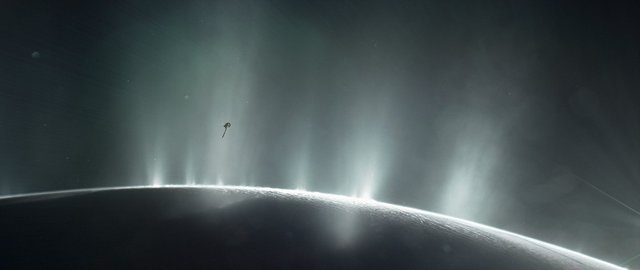
Image:JPL/NASA
Microbes, living in Earth's hedrothermal vents, consume hydrogen and CO2 to produce energy, and produce methan as a waste. Cassini sensors detect all these gases in Enceladus' plumes which lead to conclusion about possible life in subsurface ocean of Enceladus.
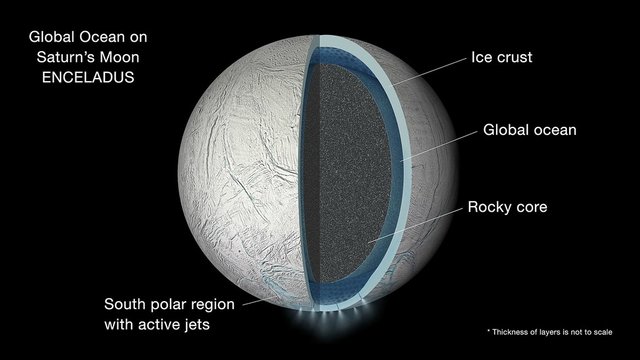 Image: NASA/JPL
Image: NASA/JPL
Cassini found Enceladus plumes composition: water vapour -98%; hydrogen - 1%; mix of CO2, methan ammonia and other gases - 1%.
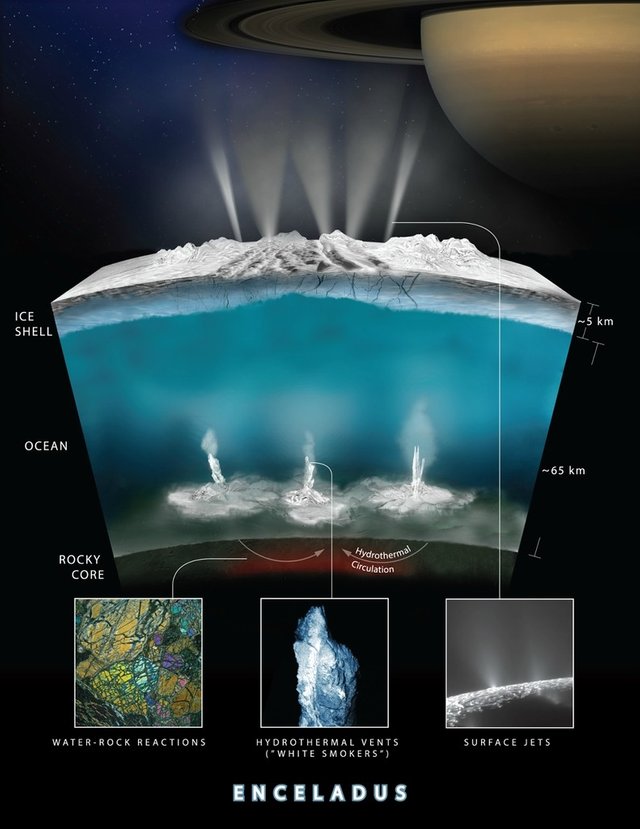
Image: NASA/JPL
Researchers also considered other versions of hydrogen origin, such as radiolysis of water molecules in result of solar and space radiation. However, in this case, oxygen molecules also must present , which were not detected.
Another discovery, published yesterday - new water geysers on Jupiter's moon Europa. These jets were observed bu the Hubble telescope in 2016, in the same region, where they were detected two years earlier. Water plumes of the last eruption was about 100 kilometers high - twice as 2014 eruption.
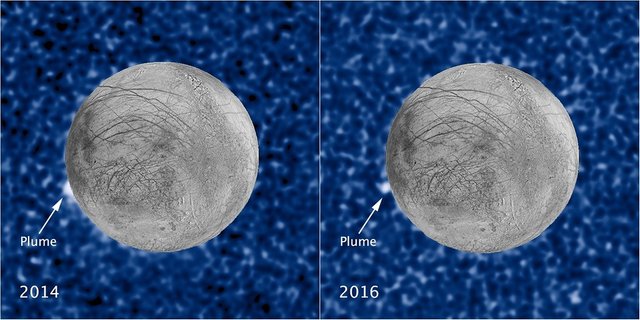
Image:NASA/JPL
The area, where eruptions happened is considerably warmer than neighboring regions, and covered with fresh fissures. This is similar to Enceladus's warm areas on the pole, where geysers also were detected.
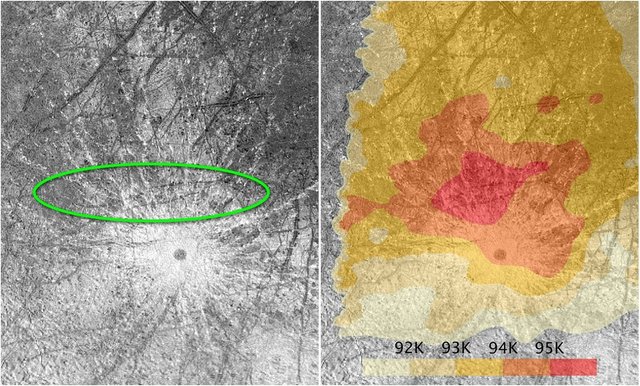
Image:NASA/JPL-Caltech
Hubble observations show that water eruptions is frequent phenomena on Europa. This is excellent news. NASA and ESA are developing two missions to Jupiter/Europa - JUICE and Europa Clipper. Sadly, third and the most ambitious mission - Europa Lander, obviously haven't got an approval.